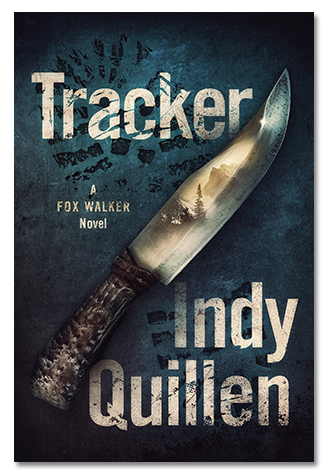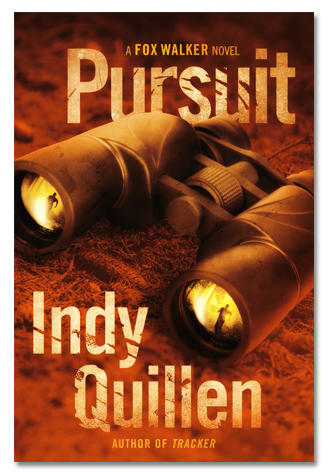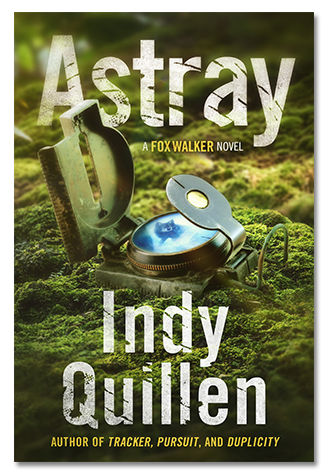 Food storage can be as extensive as canning a year’s worth of garden produce (to last until the next harvest), to having enough food on hand to feed your family for a couple of weeks. Everyone has different needs and views on the topic, as well as space for storage.
Food storage can be as extensive as canning a year’s worth of garden produce (to last until the next harvest), to having enough food on hand to feed your family for a couple of weeks. Everyone has different needs and views on the topic, as well as space for storage.
If you read my blog: Survival: What if You Need to Evacuate you noticed I keep a plastic bin full of all kinds of freeze-dried foods as well as canned goods. There’s a reason behind what I choose for emergency supplies and I thought I’d explore that in more detail this week.
First though, I think I should point out that for our regular meals, my family eats foods as fresh as possible. Although we purchase staples to last for a week or longer, we purchase fresh ingredients for our meals (produce and meats) on an almost daily schedule. That just happens to be our personal choice. We prefer to cook with fresh produce vs. canned. But that is the best-case scenario. We may not always be able to count on doing that—especially in emergency situations. So I’ve developed a system for food storage that works for our family. Hopefully it gives you ideas for yours.
My Three Basic Steps as Follows:
Step one – Canned Goods:
 I keep a variety of canned fruits, vegetables, meats, soups, juices and broths on hand at all times. These are items that can quickly be converted into a meal and simply warmed on the stove top. There are also some packaged goods, such as dried beans, herbs, rice, and whole-wheat pasta to supplement the canned goods. These all have a relatively short shelf life in the big picture of long term storage. You will need to organize them in a way that makes it easy to rotate and use up old product first, replacing with new. To do this, every once in a while we fix meals from the storage. Maybe we’ve had an unexpected expense and need to watch our budget for one pay period. We’ll simply forgo grocery shopping for a week and use our supplies. It’s particularly nice in the winter months if the weather is nasty and you don’t want to get out. And what’s better than a homemade pot of soup on a chilly winter’s day?
I keep a variety of canned fruits, vegetables, meats, soups, juices and broths on hand at all times. These are items that can quickly be converted into a meal and simply warmed on the stove top. There are also some packaged goods, such as dried beans, herbs, rice, and whole-wheat pasta to supplement the canned goods. These all have a relatively short shelf life in the big picture of long term storage. You will need to organize them in a way that makes it easy to rotate and use up old product first, replacing with new. To do this, every once in a while we fix meals from the storage. Maybe we’ve had an unexpected expense and need to watch our budget for one pay period. We’ll simply forgo grocery shopping for a week and use our supplies. It’s particularly nice in the winter months if the weather is nasty and you don’t want to get out. And what’s better than a homemade pot of soup on a chilly winter’s day?
Step Two – Freeze-Dried Food Pouches:
 I have food supplies stored for what I call short-term emergency events. These are freeze-dried meals in a pouch (they usually feed two or more people) and all you need is water. You add boiling water to the pouch and wait a few minutes for it to rehydrate the food. Voila – a meal! We’ve eaten these while backpacking on the trail or campground cooking. They are quite delicious (especially if you have been hiking all day!) and are much more satisfying than a can of warmed up pork ’n beans. They are also great to have on hand for emergencies when you can’t get to a store, or there aren’t any food deliveries due to weather or disaster scenarios. Maybe the power is out for days. You will only need to heat water on a camp stove or grill.
I have food supplies stored for what I call short-term emergency events. These are freeze-dried meals in a pouch (they usually feed two or more people) and all you need is water. You add boiling water to the pouch and wait a few minutes for it to rehydrate the food. Voila – a meal! We’ve eaten these while backpacking on the trail or campground cooking. They are quite delicious (especially if you have been hiking all day!) and are much more satisfying than a can of warmed up pork ’n beans. They are also great to have on hand for emergencies when you can’t get to a store, or there aren’t any food deliveries due to weather or disaster scenarios. Maybe the power is out for days. You will only need to heat water on a camp stove or grill.  These are efficient ways to cook a meal for an entire family. There are lots of brands out there to choose from. We’ve used the Backpacker Pantry and Mountain House food pouches. And we recently purchased some of the Thrive Express meal pouches to try, since we know their canned products are excellent. Besides the ease of cooking, these pouches are great because of the longer shelf life they bring to the equation. Make sure you check the dates as you buy them. Most of them have a least 10-12 years shelf life. And in an emergency, even older dates will be fine…only the nutritional value and taste will have slightly changed. The food will still be okay to consume.
These are efficient ways to cook a meal for an entire family. There are lots of brands out there to choose from. We’ve used the Backpacker Pantry and Mountain House food pouches. And we recently purchased some of the Thrive Express meal pouches to try, since we know their canned products are excellent. Besides the ease of cooking, these pouches are great because of the longer shelf life they bring to the equation. Make sure you check the dates as you buy them. Most of them have a least 10-12 years shelf life. And in an emergency, even older dates will be fine…only the nutritional value and taste will have slightly changed. The food will still be okay to consume.
Step Three – Freeze-Dried Canned Foods:
What if we are caught in a scenario that goes longer than a few weeks? What if someone can’t work because of an injury of health issues? Or a job goes away? What if you’ve used up your immediate stores of food? This is where my long-term storage comes into play. Some people simply store up enough store-bought cans of food to last for years. But the last thing I am interested in doing is trying to keep all that food rotated! Plus I don’t have the storage space to do something like that.  So I found a solution that works well for us.
So I found a solution that works well for us.  I found another Freeze-Dried food for this step. I’m sure there are other brands out there, but we prefer the Thrive foods. These are foods that have been picked fresh and ripe and quickly freeze-dried and sealed in cans. Freeze-Dried foods retain more nutritional value than dehydrated foods too. Again, these foods are re-hydrated with water. Surprisingly, most of it tastes good just snacking on it right out of the can (think Astronaut food). Most of the cans have a shelf life of twenty years. You read that right! I love this. I can put these babies in storage and not worry about the date for a long, long time! Even once you’ve opened the cans, many are good for an entire year afterwards! There are lots of items to choose from, so how do you start?
I found another Freeze-Dried food for this step. I’m sure there are other brands out there, but we prefer the Thrive foods. These are foods that have been picked fresh and ripe and quickly freeze-dried and sealed in cans. Freeze-Dried foods retain more nutritional value than dehydrated foods too. Again, these foods are re-hydrated with water. Surprisingly, most of it tastes good just snacking on it right out of the can (think Astronaut food). Most of the cans have a shelf life of twenty years. You read that right! I love this. I can put these babies in storage and not worry about the date for a long, long time! Even once you’ve opened the cans, many are good for an entire year afterwards! There are lots of items to choose from, so how do you start?
Since I have limited space, I choose to purchase Thrive food items in groupings that give me all the ingredients I need to create a meal.  Here’s an example: #10 can of white rice, #10 can of chicken cubes, pantry can of chicken bouillon, pantry can of peas. Pantry can of green beans. You can add cans of Onions and spices as well. These ingredients would make up a nice pot of chicken soup with rice. A pantry can of sliced apples would be dessert. Next you could purchase the beef, bouillon, tomato powder, diced tomato, and enough veggies to make vegetable beef soup. Each time I purchase the items I need for a meal, I also buy some type of fruit as well. I also purchase the large cans of staples, such as flour, eggs, baking soda and powdered milk. You may wonder why I purchase the cans of rice, flour etc., when I can buy huge bags of product at a cheaper price. Once again, I don’t have the room for that kind of storage and I want that longer expiration date the Freeze-Dried foods offer.
Here’s an example: #10 can of white rice, #10 can of chicken cubes, pantry can of chicken bouillon, pantry can of peas. Pantry can of green beans. You can add cans of Onions and spices as well. These ingredients would make up a nice pot of chicken soup with rice. A pantry can of sliced apples would be dessert. Next you could purchase the beef, bouillon, tomato powder, diced tomato, and enough veggies to make vegetable beef soup. Each time I purchase the items I need for a meal, I also buy some type of fruit as well. I also purchase the large cans of staples, such as flour, eggs, baking soda and powdered milk. You may wonder why I purchase the cans of rice, flour etc., when I can buy huge bags of product at a cheaper price. Once again, I don’t have the room for that kind of storage and I want that longer expiration date the Freeze-Dried foods offer.
As I told my husband, if we never have an emergency that requires us to use up this food, we’ll definitely have plenty of food for our retirement years!


 Being outside in nature is the most basic part of who I am. Besides gaining knowledge about wildlife, I learn lessons about who I am, and surprise myself about what I am capable of achieving. Nature continually inspires me. It is a part of all my writings, no matter the genre or subject matter.
Being outside in nature is the most basic part of who I am. Besides gaining knowledge about wildlife, I learn lessons about who I am, and surprise myself about what I am capable of achieving. Nature continually inspires me. It is a part of all my writings, no matter the genre or subject matter. 





If the military can survive in the field on MREs, no reason we ordinary folks can’t if the situation called for it.
Agree, Mike. But I promise you these foods are much better than MREs! :0)